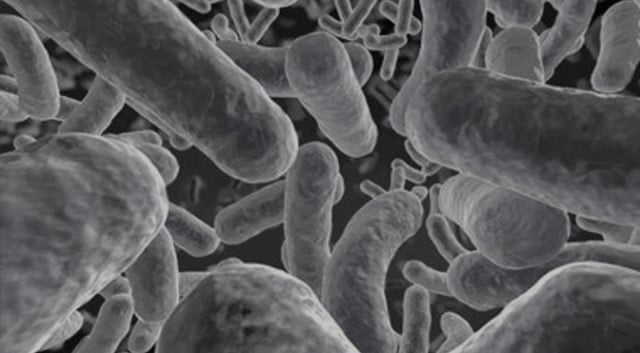Now Reading: CIGARETTE BUTTS DNA: EMERGING TOOL OF FORENSIC SCIENCE
-
01
CIGARETTE BUTTS DNA: EMERGING TOOL OF FORENSIC SCIENCE
CIGARETTE BUTTS DNA: EMERGING TOOL OF FORENSIC SCIENCE
With the advent of DNA analysis/sequencing technology in the late 1980s, the future of forensic investigation is transformed miraculously. DNA can be extracted from different biological trace evidence that is collected from the different crime scenes. Among the vast pool of evidence that is found on a crime scene, cigarette butts are one of the key trace evidence as it contains both saliva as well as fingerprint, which are important for individual’s identification. The DNA extracted from the cigarette butts acts as a genetic fingerprint, thus helpful in the identification of crime suspect. DNA from cigarette butts can be extracted from both the outer layer as well as the sponge as the saliva traces in cigarette butts have lip epithelial tissues as a primary
source of DNA. These epithelial cells can be observed using a scanning electron microscope. A good quantity of DNA 2-160 nano grams (ng) can be extracted to perform DNA typing and DNA profiling for comparison and identification of suspects. As a general protocol, the cigarette butt evidence found at the crime scene is photographed, dried at room temperature, collected in a paper bag, labelled and then send for examination to the concerned facility/lab. The most critical step in the analysis of the cigarette butt as forensic evidence is the extraction of the DNA as it affects the quality of forensic profiling. The modified extraction method allows improve the processing of evidence by decreasing the contamination and increasing the yield. For DNA extraction, the cigarette butts are cut either parallel or perpendicular to the length of the cigarette. Some common extraction methods includes chelax-100 extraction kit, chelax-100 along with proteinase k and DNA1Q system. Among all the mentioned methods, the chelax-100 with proteinase k is considered to be the most effective one in terms of DNA yield, reduced contamination and as cost-effective method. During the extraction of DNA from cigarette butts contaminants like tars, phenolics, paper additives and flavour additives get mixed with the DNA and act as inhibitor of polymerase chain reaction (PCR). The purification steps used for removal of these inhibitors further reduces the DNA yield. Therefore, instead of using organic extraction methods, the use of thermophilic enzymes like proteinase k minimizes the effect of contaminating inhibitors by degrading various nucleases. A few recent research have shown the use of paramagnetic particles coated with DNA-binding surface as an automated approach for DNA extraction from cigarette butts to reduce human error and sample cross-contamination. After the extraction process is completed, the isolated DNA is quantified using spectrometric/fluorometric method and then used for amplification using conventional PCR or quantitative real-time PCR. The successful DNA amplification helps in the genetic characterization of trace saliva on cigarette butts. For the DNA profiling various DNA typing method is in use which includes short tandem repeat profiling of autosomal markers (DIS80, HLADQA1, TH01 and PM) and y-chromosomal markers (DYS19, DYS390, DYS392 and DYS393). The DNA profile generated from the cigarette butts is than compared with the blood DNA profile of the suspect. The comparison process carried out by matching the expressive peaks which denotes the specific allele location. When the DNA profile of the evidence sample in question matches with that of the suspect, the combined genotype estimated frequency of occurrence is calculated. This frequency shows the probability of another random individual of the population to have the same profile. The lower the value of this frequency, the higher is the evidentiary value of biological evidence. The real success of DNA profiling of a trace biological evidence like cigarette butts depends upon the quantity as well as the quality of DNA obtained from the sample. The proper collection and preservation of these biological samples are vital as they can quickly degrade with exposure to different environmental insults. DNA quantity from cigarette butts are also affected by the holding style, and duration for which cigarette is pressed between the lips. Further, cosmetic products such as lipstick do not effect the quantity and result of DNA typing. As we know, cigarette butts are the frequent contributor of DNA, fingerprints and lip prints, so the development of fingerprints can be done along with the extraction of DNA. Among the different latent fingerprint development methods, the one most suitable for cigarette butts is the use of DFO(1,8-diazafluron-9-one). This method though reduces the DNA quantity during STR profiling by 16% but shows specific individual genotypes at different loci when compared with other methods. Recent research works demonstrate that DNA extracted from cigarette butts can also be used to distinguish between monozygotic twins. Thus, this trace biological evidence provides an answer to many investigative questions and play a vital role in a large number of crimes like burglary, theft, stalking, homicide,etc.
Case Study
To understand the importance of this trace evidence in forensic investigation, let us look at a homicidal case which was solved after 35 years with the help of the DNA recovered from the discarded killer’s cigarette butt. In 1985, a 23-year-old woman was found strangled and sexually assaulted on the road side in Florida, USA. Police collected all the evidence and interviewed her friends, family and possible suspects, but the trial went cold. The investigation continued for 35 years, than a public information officer,Mike Woods was assigned to this case. He worked using genealogy to find the link. The DNA extracted from the cigarette butt obtained from the crime scene was typed and searched in their database to find the suspect. The culprit, Daniel was charged for murder and sexual assault. This and many other such cases have showed how biological evidence collected from trace elements like cigarette butts now emerged and proved to be a powerful tool forensic investigation.
References:
1. Vidaki et al., Investigating the epigenetic discrimination of Identical twins using buccal swabs, saliva and cigarette butts in the forensic setting, Genes(Basel), 2018.
2. Witt et al., Establishing a novel automated magnetic bead-based method for the extraction of DNA from a variety of forensic samples., Forensic Sci Int Genet. 2012 Sep.
3. Lee et al., Effects of fingerprint development reagents on subsequent DNA analysis, Electrophoresis, 2019 Jul.
Author :- Princy
I am from New delhi and currently in my final semester of M.Sc. forensic science from Banaras Hindu University. I have done my bachelor’s degree in zoology. I have done certification course in facial reconstruction and biomedical nanotechnology and a hand-on workshop on exhumation and identification from AIIMS, jodhpur. I have done internship at CSIR- IGIB on NextGen dna sequencing and in fingerprint department of CBI- cfsl. I have also attended many national and international workshops related to Forensic science. I aspire to do research in Forensic biology in near future.










